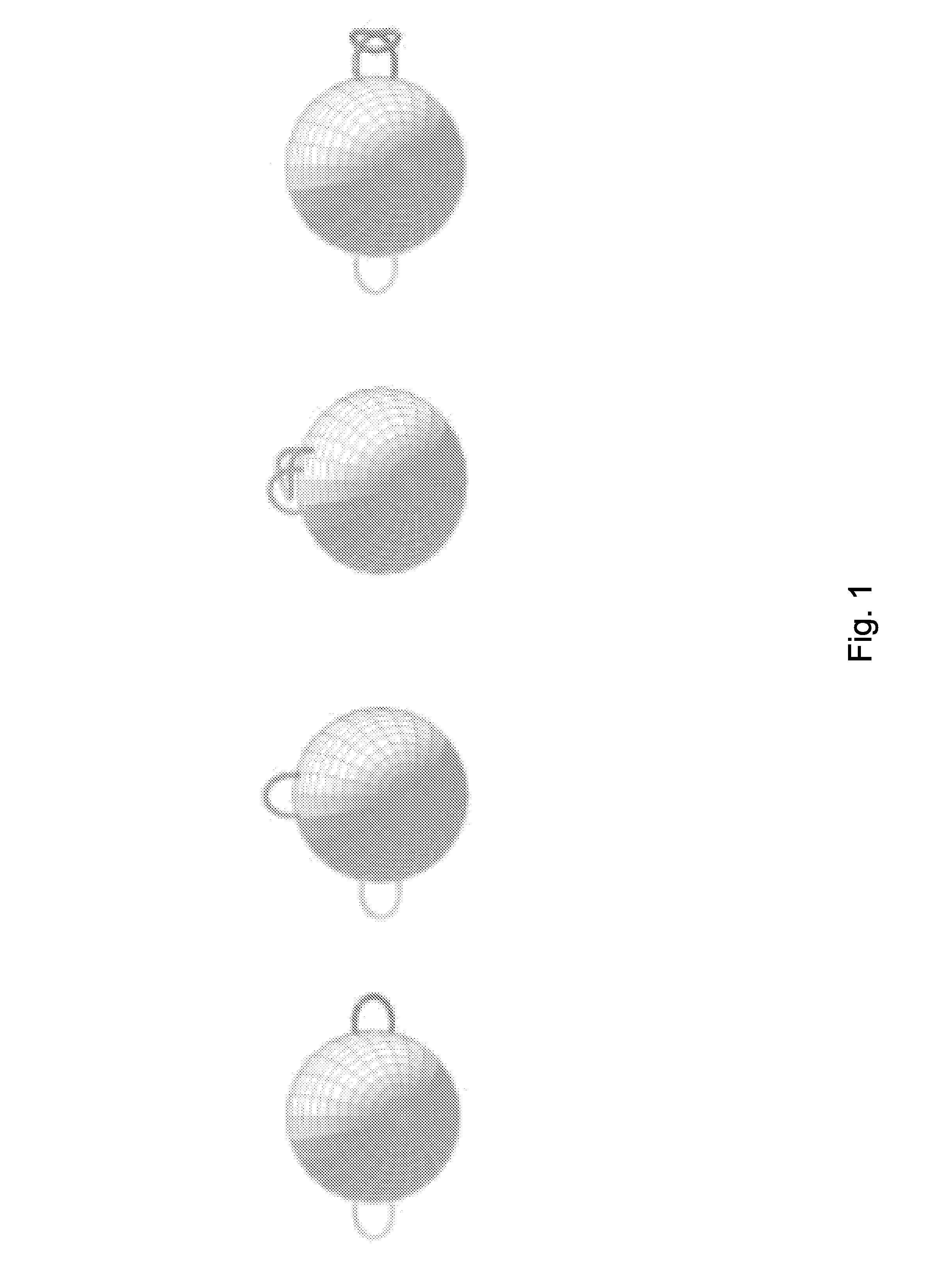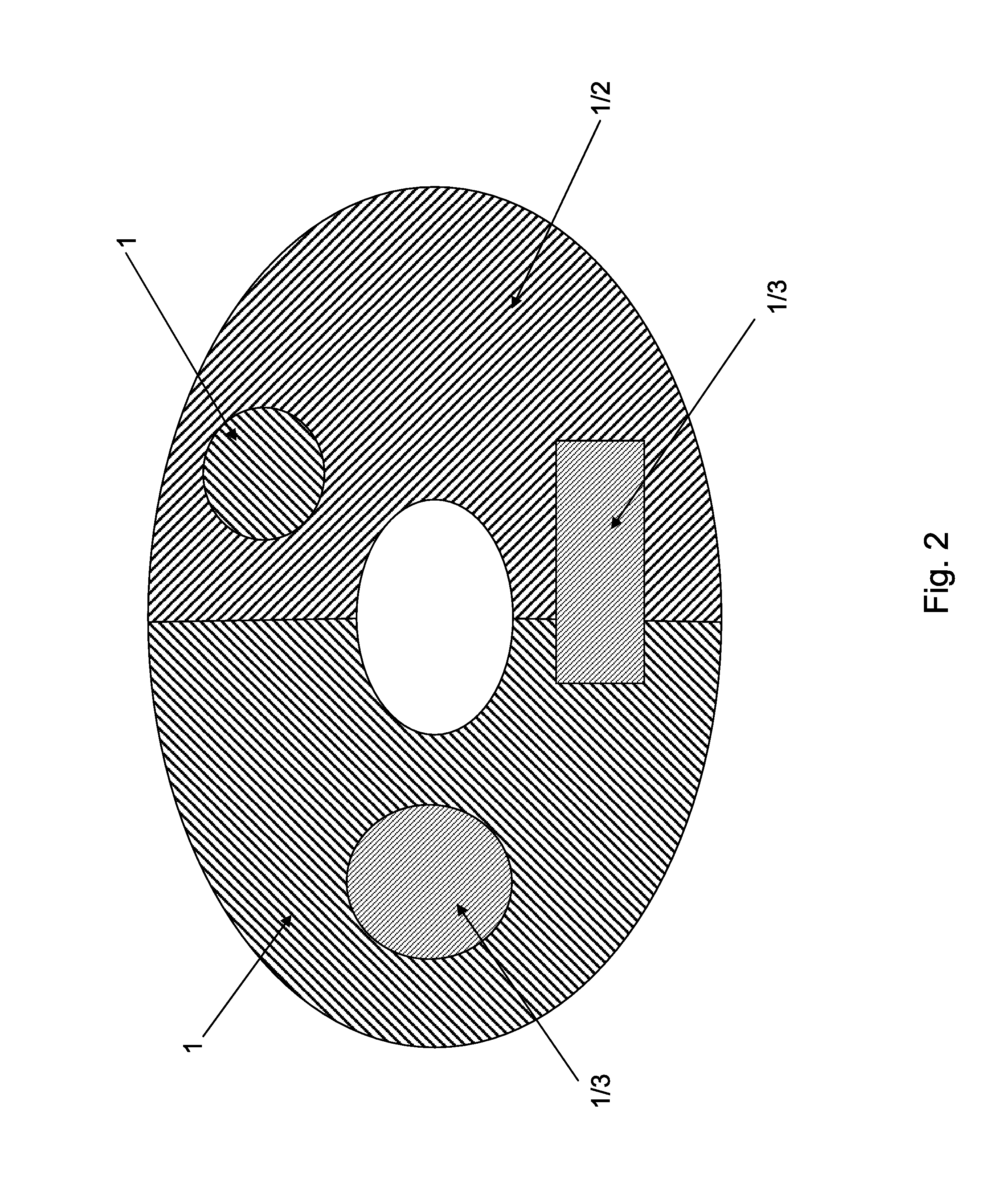Data processing system utilizing topological methods to manipulate and categorize n-dimensional datasets
a data processing system and topological method technology, applied in the field of data processing systems, can solve the problems of current geometrical methods used to categorize or analyze datasets, and the inability to extract or process morphological features that humans routinely take for granted
- Summary
- Abstract
- Description
- Claims
- Application Information
AI Technical Summary
Problems solved by technology
Method used
Image
Examples
example 16
[0121] Let
[0122]((X+f•)2⩓g•,Y+h•)(x)=∫0∞dimH((X+fx)2⩓gx,Y+ hx)-1[t,∞))ⅆt
[0123]It is also preferred to perform f,gi for various gi:n→+ and then compute linear combinations of the results. For this one may define formal sums of functions.
[0124]Definition 17. Let αi∈, gi:n→. We may define G=Σi≦kαigi so that (G)=Σi≦kαi(gi).
[0125]The product of formal sums may be defined as the sum of the term by term products. Then f,G=Σi≦kαif,gi. An embodiment used repeatedly in this disclosure is, for A⊂Br, the formal sum G=Br−(Br,A) which yields the function ff,G, where
f,G=f,Br−f,(Br,A)
In the case f=χX this reduces at x∈n to dimH(X∩Br,x)−dimH(X∩Br,x,X∩Ax), which indicates the homology of Ax in X∩Br,x, or more precisely the localized effect of identifying Ax to a point.
[0126]§Constructing Equivalences
[0127]Subsets of n may be isometric, homotopic, diffeomorphic, and compared with other equivalences. Definition 13 gives us maps Fi=X,fi from n→+ for each homology index 0≦i≦n. By using any invariant ...
example 21
[0149] Conway's Game “Life” Let X⊂2. Define γ:2→+ by
γ(0,0)=½,γ(a,b)=1 for 0a2+b2a,b)=0 for a2+b2≧3
Put X0=X, and Xn+1=Xn,γ0−1[2.5,3.5]. Then nXn is the iteration in Conway's game of Life.
[0150]Proof: The FIG. 6 shows the values of γ. For a point to survive its possible number of neighbors are ([2.5,3.5]−0.5)∩={2,3} neighbors, and for a new point to appear possible number of neighbors are ([2.5,3.5]−0)∩={3}.▪
[0151]We may iterate as in Game of Life using higher homology information. The next embodiment was suggested by a materials problem in calculus texts.
example 22
[0152] Sand Example
[0153]Consider a (finite) CW-complex X⊂3, perhaps with spacious tiers of sculptural curvature. An idealized sand is known to form cone-shaped mounds of fixed ascent angle when poured onto a horizontal surface. Let C be the infinite solid cone with vertex the origin defined by extending one of the mounds of sand downward. Assume the surface of X is roughened in effect like the sand. In this application the problem is to determine if the sand precipitates from 3\X and falls by gravity, what will the final accumulation of the sand look like on X?
[0154]The final state, with notation from Example 16, may be given by the iteration: X0=X and Xn+1⊂ by Xn+1=(((XnC●)∂C●)2−((XnC●)(∂C\{0})●)2+(Xn{0}●)0)−1{1,2}
[0155]If X is convex then the sequence stabilizes after one iteration, and in general it usually converges in a few steps. A complete discussion would require additional hypotheses on the sand's properties in compound cones.
[0156]As with crystal growth there is a state o...
PUM
 Login to View More
Login to View More Abstract
Description
Claims
Application Information
 Login to View More
Login to View More - R&D
- Intellectual Property
- Life Sciences
- Materials
- Tech Scout
- Unparalleled Data Quality
- Higher Quality Content
- 60% Fewer Hallucinations
Browse by: Latest US Patents, China's latest patents, Technical Efficacy Thesaurus, Application Domain, Technology Topic, Popular Technical Reports.
© 2025 PatSnap. All rights reserved.Legal|Privacy policy|Modern Slavery Act Transparency Statement|Sitemap|About US| Contact US: help@patsnap.com



